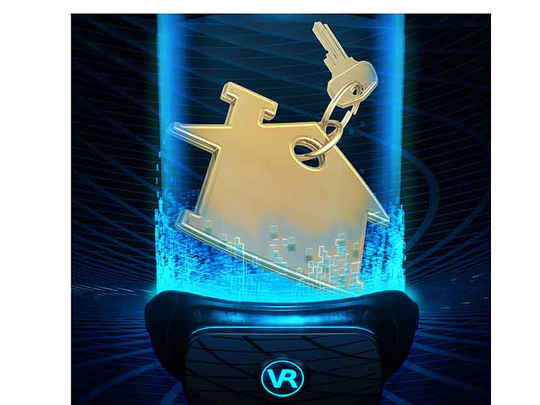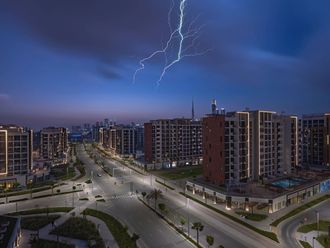
I am sitting in a Starbucks with an architect. He hands me an Oculus virtual reality headset with a Samsung phone slipped into the goggle area. In his hands is an iPad.
I put the headset over my eyes and the café disappears. Suddenly I am in Miami, inside a sleek luxury apartment. I can see white condo towers and water views from the vast windows. I move out to the pool, a must for any luxury condo in Miami, and a menu appears offering me the chance to change the time of day simply by looking at the choice. I select sunset, the water in the pool moves with the breeze and I feel myself start to relax when the architect’s voice, seemingly coming from space, startles me. In fact, he is still sitting across from me at the café, and I am now clutching the edge of the table to give myself a sense of where my body is in space.
Somewhere in my wandering around the virtual Miami bachelor pad I run across a beautiful model sitting out on the deck in a tasteful black dress. “If you look at her face for a few seconds, she smiles at you,” the architect, who is following my adventures, and my gaze, on the iPad tells me. The idea of forcing her to smile unnerves me even though I know she is not real, and I walk away. A few minutes later I reluctantly take off the headset and rejoin reality.
The architect, Gonzalo Navarro, is part of a growing number of people who specialise in creating VR experiences for wealthy real estate shoppers. Navarro’s company, ArX Solutions, creates virtual apartments for condo buildings that have not actually been built yet.
“I am an architect who has never designed a building,” he tells me with a laugh. He did, on the other hand, create a VR version of an entire city once to help the builders petition for approval to create it in the real world.
$2.6-billion market
Virtual reality, a technology that most associate with gaming, entertainment and dystopian warnings from sci-fi writers such as Neal Stephenson, has moved into the real estate world in a big way. Goldman Sachs estimates that by 2025, VR software for real estate applications will be a $2.6-billion (Dh9.5 billion) market. Companies such as Transported and You Visit create websites for viewing homes in VR.
Real estate agencies from Sotheby’s to Corcoran to Douglas Elliman have used the technology to entice clients. Navarro says existing sites like Zillow will get on the VR bandwagon as the tech becomes more ubiquitous and hardware gets cheaper, allowing it to eventually trickle down to the non-luxury real estate market.
As VR apps and headsets are becoming more quotidian, entering more homes, usually as an entertainment tool, competition in VR real estate has become fierce, says Navarro.
“All the big real estate studios are working on this technology,” he says, each with their own programmers busy trying to create a more realistic view of the future. Someday soon, people could spend hours being transported into everything from Park Avenue penthouses to sprawling McMansions. Once the technology becomes as everyday as iPhones have, none of us may ever be productive again.
Even with the current limitations in the physical hardware, which limits the sharpness of the image, virtual reality makes a lot of sense when selling a new development, says Navarro. Instead of spending the money to build a model apartment and furnish it, real estate companies can have virtual versions created that can go where the agent does.
Cheaper option
While virtual mockups are not cheap, they cost a fraction of the $1 million or so that a furnished and decorated model luxury apartment would cost, explains Navarro. At a time when wealthy foreign buyers are flooding the luxury markets in large cities like New York and London in an effort to invest their money away from their volatile home countries, a VR set takes away the burden of bringing a buyer halfway across the world to see a model apartment. The novelty of walking through a virtual reality home adds to the allure.
“It’s like Call of Duty, only without the killing part,” Navarro says. The entire process of creating an oversized condo, with tastefully bland furniture in neutral tones, out of thin air takes only about a month and a half. The paintings on the walls and fancy light fixtures are all based on real items. The smiling model in the black dress is the only other element introduced into the virtual world that exists outside it. “She’s real,” Navarro says with a laugh.
— Guardian News and Media












